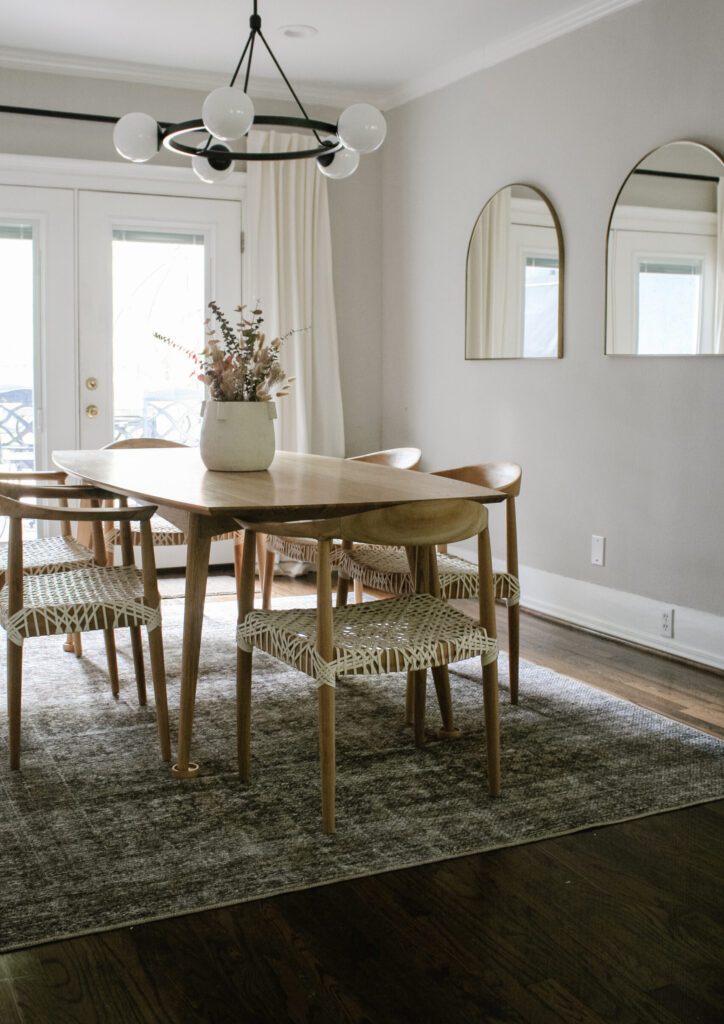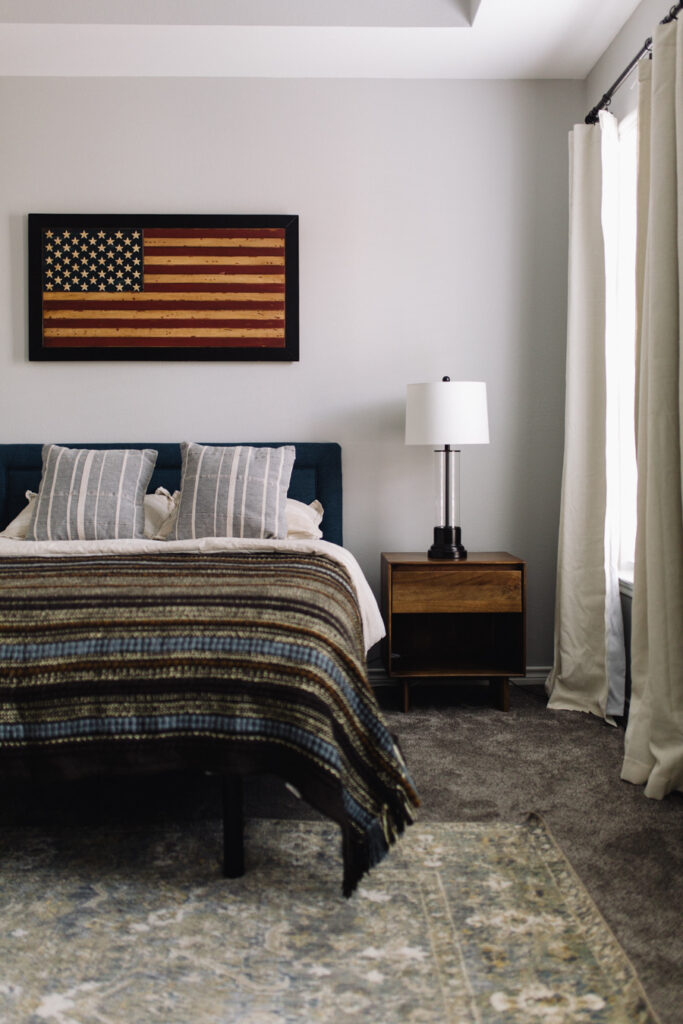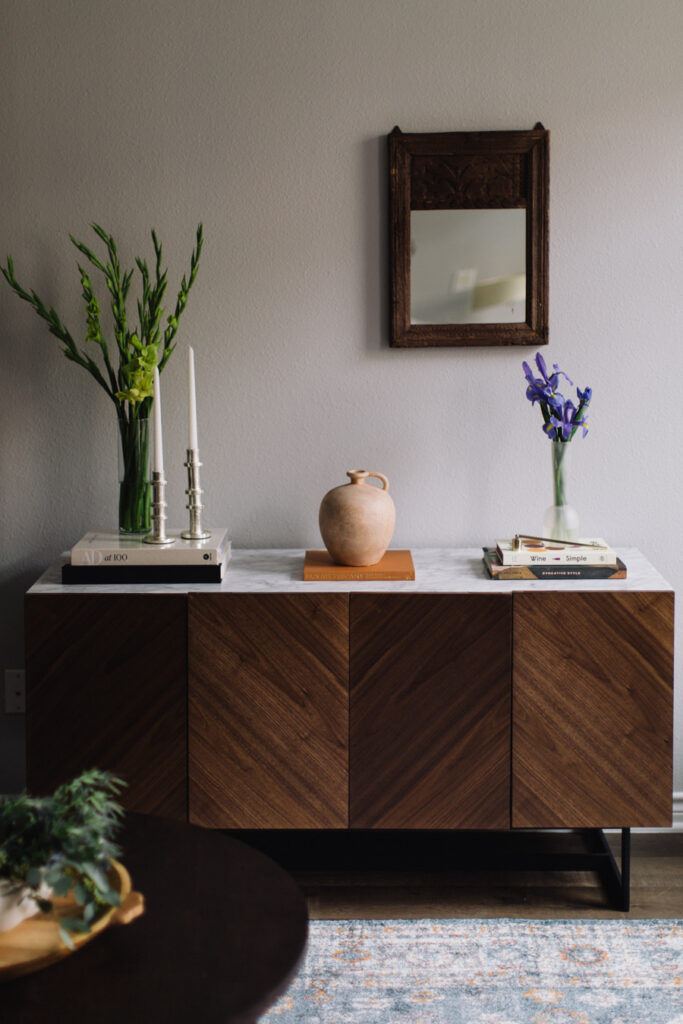HMD specializes on renovation projects that honor the home's character while adding a modern interpretation.
Explore The Blog
Home Rennovations
Do-It-Yourself
Home Styling
Favorite Things
Case Studies
Interior Design E-Design – How Does It Work?
When you think of working with an interior designer, are the first words that come to mind – expensive, large renovation, or long timelines? While the interior design industry meets some of those larger luxury needs, it’s actually more attainable today than ever before and e-design is the reason why!

According to FlowingData in 2019, most people spent 50% of their waking day at home but since the pandemic this number has risen to almost 62%. That’s a lot of time in one space. So why wouldn’t we try to make it a place that’s enjoyable to spend all those waking hours — even on a budget?
Hiring an interior designer is an investment in your home yet e-design has lowered the barrier to entry by creating new, accessible starting price points on design fees. So if you feel that your home could use some professional help, the purpose of this article is to help you decipher if e-design makes sense for you and to give an understanding of the process.
01. | What are the Levels of Service in Interior Design?
New Builds/Renovations
Beginning with the highest level of involvement, interior designers often help with new build or renovation design. This process is the most time consuming simply because of the scale of work and the collaboration required to work with contractors and architects.
The design that goes into these types of projects is highly detailed as there are a high number of decisions that need to be made – from kitchen layouts to crown molding design to the stain color on the wood floors. This level of service is most often associated with interior design because the need is most apparent for individuals as they try to navigate the large number of decisions during this process. In addition, larger renovations are the best visual marketing tool for design firms to show their value. So the majority of interior design portfolios will be before and after pictures of this level of service.
Full-Service Furnishing Projects
The next level of interior design is full-service furnishing projects. In these type projects, the designer will work with clients to furnish a home or space. The “full-service” means that the designer is overseeing design concept, procurement (sourcing), receiving, and installation. The client simply gives their approval of the design concept and the designer makes it come to life.
This service also can be paired with the new build/renovation service level. Projects that fully involve the interior designer from the beginning have the greatest impact because the designer is creating a layout plan with the end furnishings in mind – including windows that symmetrically frame a bed or an open concept that gives the right amount of space for your sectional and an adjacent dining table.

E-Design
Within the past decade, we have seen e-design debut in the interior design service offering list. E-design provides the first half of a full-service furnishing project until the sourcing. A designer will work with their client in the same way to discover their style and create a design concept, but instead of procuring and installing, the client gets to save on those billable hours by implementing the design themselves.
02.| What is the Process During an E-Design Project?
So when you first hire an interior designer for e-design, they will likely start with a number of questions about you, your home and the greatest felt needs. The inquiry process will also depend on whether or not the designer is local or remote. E-design not only has opened the doors for a lower price point but has given clients more access to designers from around the country.
In the case that you hire a local designer, they may come to the space to get measurements themselves but if they’re remote, they will rely on you to provide the detailed measurements.
Other details your e-design interior designer will ask for are a list of rooms you want help in, those room’s dimensions, the goal of the design, your budget, the timeline, photos of the space, any inspiration you want incorporated, and your likes/dislikes in color and style. Answering these questions will take some thought and time, but this research phase is another reason you will have a lower design fee in the end.
After you have answered all the inquiry details, the e-design concept will start to take shape. The interior designer will design the space with your style, budget and timeline in mind. Timeline may seem like an odd factor since most of the work is virtual but the designer needs this detail as they consider which furnishings to include in the design as backorders will impact your implementation. If a specific sofa is delayed for 8 months then that will influence which seating options the designer includes in your final design if it doesn’t meet your deadline.

Once your receive the design concept, usually there is a feedback conversation to make sure the design fits your needs perfectly. There are typically some revisions to the design after this communication.
At this point, you should have a beautiful design for your space! All that is left to do is to order the specified products in your e-design. The interior designer will send the client all the needed links and spatial planning renderings so that the design can become a reality.
03. | What are the Downsides to E-Design?
While e-design has many benefits, there are some limitations that are worth mentioning.
Limited Vendors for Sourcing
The most pronounced downside is limited access to retailers. If you hire a designer for full-service they will have access to designer-exclusive manufacturers whereas e-design will only allow items to be purchased through typical markets open to the public. This can also apply to antiques or one-of-a-kind items as most designers won’t want to risk sending a recommendation just for the item to sell out before the client has a chance to acquire.

Another potential downside is paying full retail for furnishings. Some designers are able to pass along some discounts they receive, whether it’s on shipping or the retail price.
Damaged Items or Unforeseen Delays
Even after you’ve procured your items, there’s still the risk of unexpected backorders or damaged products upon arrival. In this case, the client is the responsible party for handling resolutions. Once again, if you hire a designer for full-service, they usually have direct representatives that will help resolve issues quickly (hopefully to the extent you hardly notice there was a hiccup in the first place).
In an e-design project, this may not come up at all or you may have to put in the work to make sure the furnishings arrive in an acceptable manner.
Installation and Implementation
Lastly, depending on the comfortability of the client, installation with a roadmap can still be a challenge. This is typically a good distinguishing point on whether e-design is a good fit or not. If decorating a built-in feels stressful (even with preselected decor from an e-design) then it may be worth going the full-service route.
Conclusion
Hopefully the veil has been lifted on this concept of e-design! Now you should have an in-depth understanding of the varying service levels in interior design, what to expect out of an e-design project, and some potential downsides.
Overall, I love the accessibility that e-design affords to a wider population. This level of interior design support can alleviate the number of decisions that goes into furnishing a space and give confidence in spatial planning. That is an extremely valuable service, especially as we spend more time in our homes than ever before!
Sincerely,
HMD
Curious to learn more about working with Hope Miriam Designs on an e-design or full-service project? Click here!
This quarterly newsletter is our avenue to share home items we’re loving, tips and tricks we utilize to elevate our designs and the latest client homes we’re curating